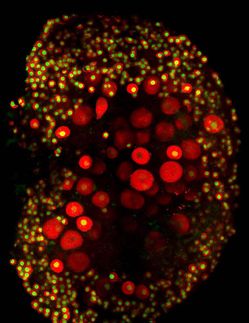Study uncovers the structure of 1 adrenergic G-protein-coupled receptor (GPCR)
Structure of important drug target elucidated using Heptares' StaR(TM) technology
Advertisement
Heptares Therapeutics Ltd, the drug discovery company focused on the design and development of novel drugs based on G-protein-coupled receptors (GPCRs), is very pleased to announce that one of its founder's key research studies has been published in the prestigious journal Nature Structure of a b1-adrenergic G-protein-coupled receptor.
The paper describes for the first time the detailed structure of the ß1 adrenergic receptor, also known as the adrenalin stress hormone receptor. This important GPCR regulates heart rate and blood pressure and is targeted by drugs commonly referred to as beta-blockers, which are used in the treatment of hypertension and heart palpitations.
These latest findings are the culmination of decades of work by Heptares' scientific founders, Richard Henderson, Chris Tate, Gebhard Schertler and other researchers at the Medical Research Council Laboratory for Molecular Biology (MRC LMB) in Cambridge, UK.
The approach used by the Cambridge team is expected to be valuable across the GPCR superfamily and forms the basis of Heptares' core proprietary StaR(TM) technology (Stabilised Receptor), which enables the Company to produce high quantities of purified and functional GPCRs. The StaR technology involves introducing a small number of point mutations into the structure of a GPCR to greatly improve its thermostability while preserving its functional and drug-binding characteristics. In this form, a StaR(TM) can be used for drug discovery approaches not previously applicable to this important family of drug targets, such as molecular modeling, solution phase assays, coupling to surfaces (chips), crystallisation and structure-based design.
Topics
Organizations
Related link
Other news from the department research and development

Get the life science industry in your inbox
By submitting this form you agree that LUMITOS AG will send you the newsletter(s) selected above by email. Your data will not be passed on to third parties. Your data will be stored and processed in accordance with our data protection regulations. LUMITOS may contact you by email for the purpose of advertising or market and opinion surveys. You can revoke your consent at any time without giving reasons to LUMITOS AG, Ernst-Augustin-Str. 2, 12489 Berlin, Germany or by e-mail at revoke@lumitos.com with effect for the future. In addition, each email contains a link to unsubscribe from the corresponding newsletter.


























































